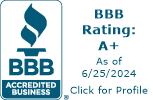My Beagle's Name is Beulah
I love my beagle guys. They are delightful and always full of stories. I could listen to them every day.
A Tail-Wagging Solution
At Louis Page, we’ve got some doggone good news! Our newest customer just happens to raise beagles—yes, those cute, floppy-eared hunters with a nose for adventure. He came to us looking for the perfect fencing solution for containing his high-energy, scent-driven beagles. Guess what? We had just the thing—our hexagonal apron fence.
The Hexagonal Apron Fence
Now, if you’ve ever owned a beagle (or any curious dog), you know they have two favorite things: sniffing out trouble and digging under fences! That's where our top dog, the hexagonal apron fence, comes to the rescue. It’s designed to keep the explorers in and keep them from digging out! They’re always curious. Plus, with the hunting season around the corner, there’s no better time to secure your grounds for your four-legged friends.
Act Now
But wait! The clock is ticking! Fall is the perfect time to install your fence before winter sets in, and you’re left with half-dug holes and half-finished projects. Don’t wait until your beagles—or retrievers or dachshunds—become escape artists, chasing squirrels and dreams across the neighborhood. Act now to prevent potential escape incidents. Get your hexagonal apron fence up and running now to ensure a safe and secure environment for your pets.
Your Peace of Mind
We’re here to make your yard safe and secure, whether you're raising beagles, chickens, or even tomato plants. Our team is not just about selling fences; we're about ensuring your peace of mind. We're committed to helping you find the right fence for your property and installing it faster than your dog can dig a hole because your satisfaction is our top priority.
Call Terry today to learn more, or click here to browse our fencing options. Your dogs (and your peace of mind) will thank you!
Happy hunting (and fencing),
Debbie Page
CEO, Louis Page Inc.
#1 Woman-Owned Fencing Company in America










